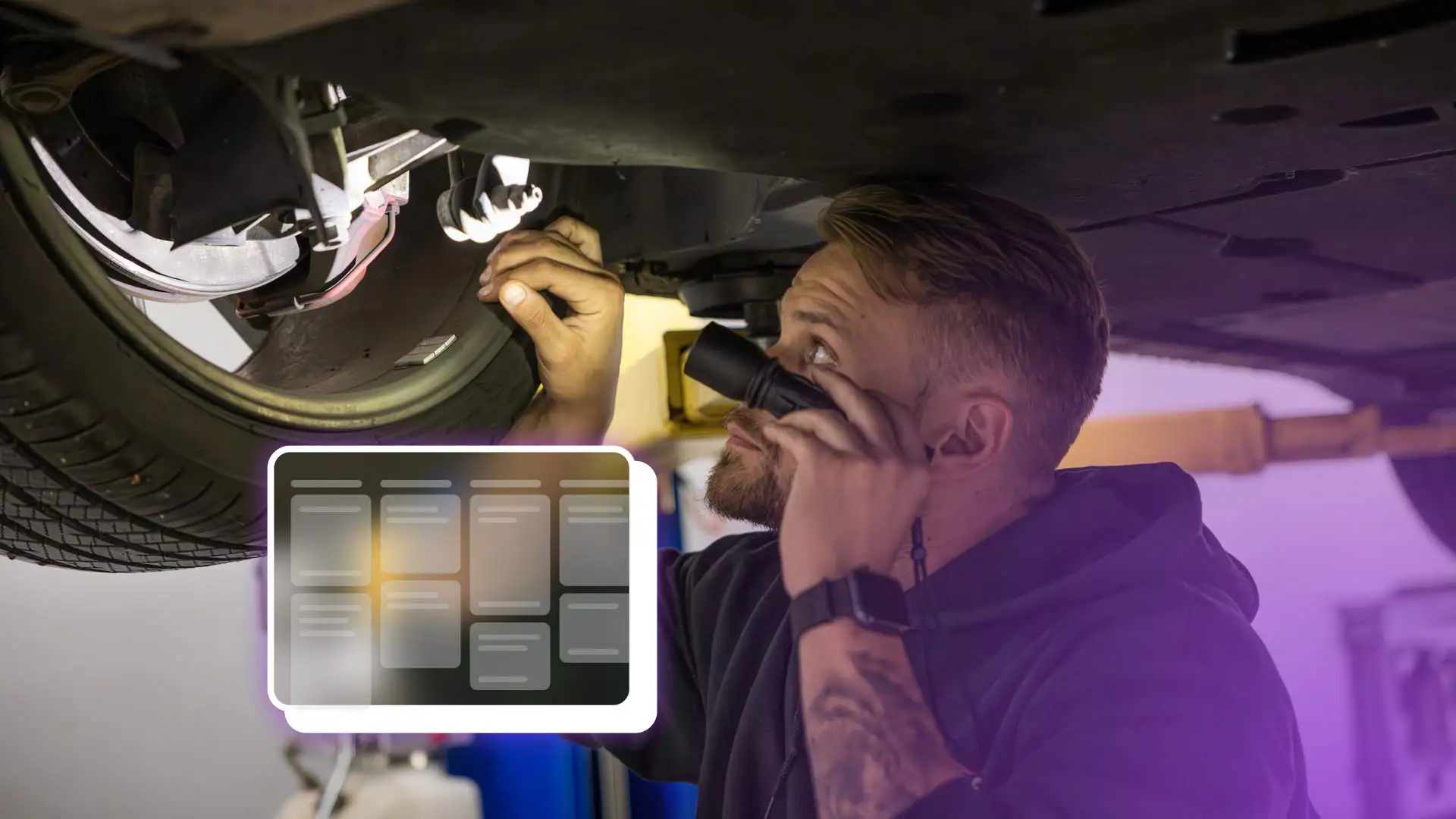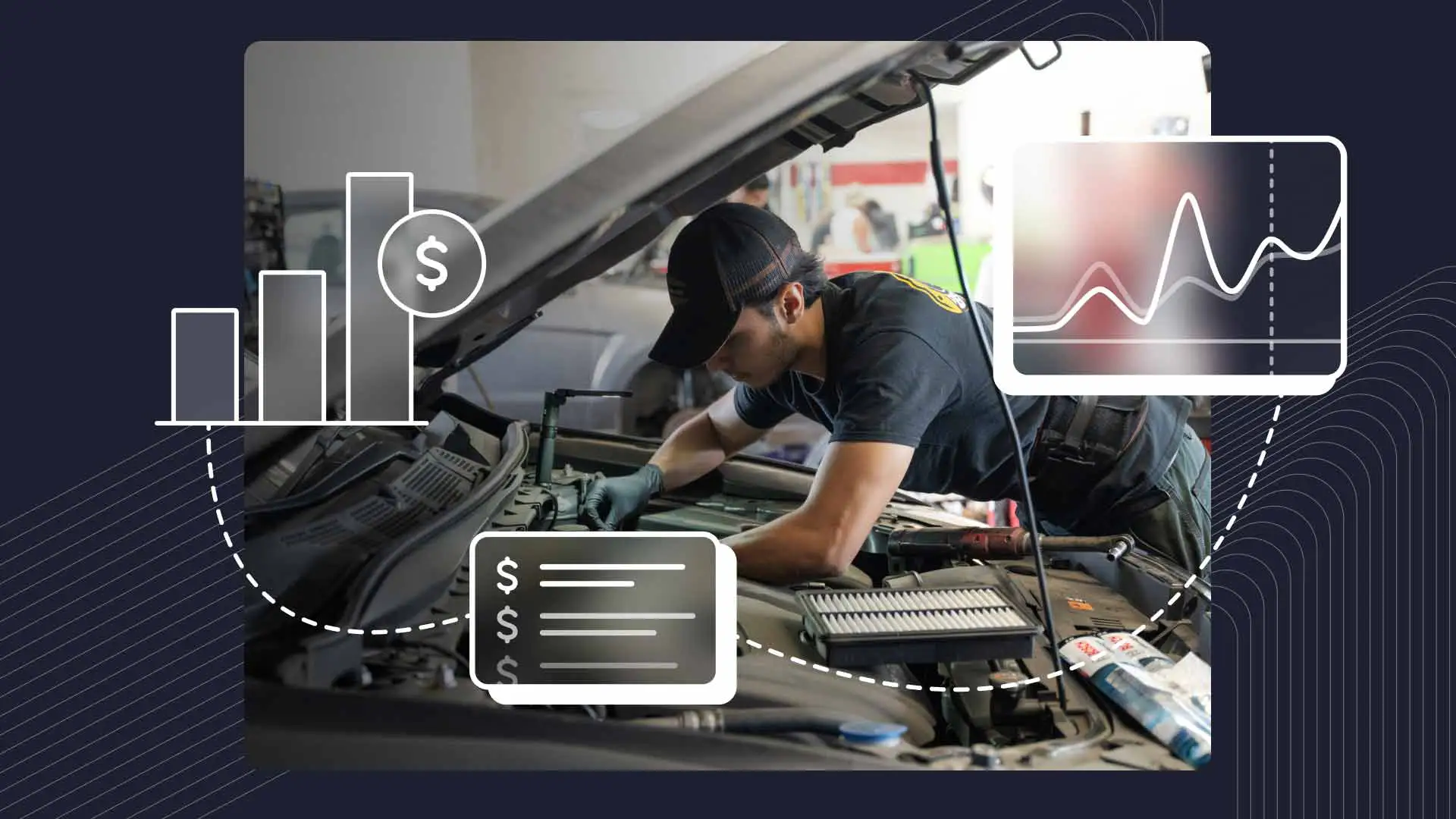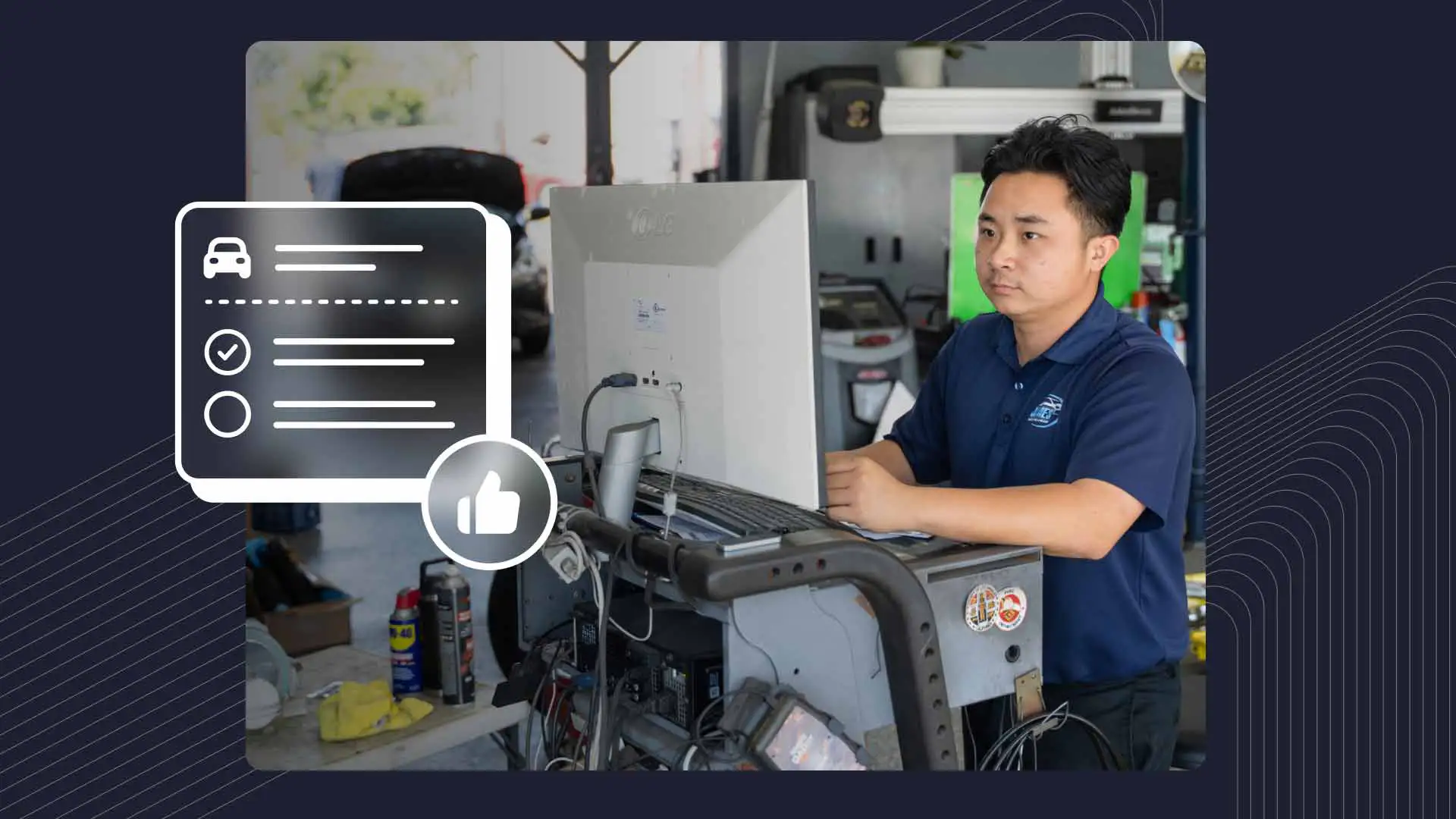Auto repair isn’t just about fixing what’s wrong with the cars that roll into your shop–it’s also about creating value for your customers while at the same time growing the business.
Enter the Multi-Point Inspection (MPI), which can help transform regular repair work into a steady revenue generator. More than just your run-of-the-mill checklist, a well-executed MPI helps build trust and strengthen your relationships with customers.
Transparency is a big deal here, and vehicle owners appreciate when you take the time to go over the inspection. It lets them know that their car is in good hands, and that your shop truly cares about their safety as well as saving them money.
Yes, we said saving your customers money. That’s because MPIs identify potential issues early on so they don’t become major (read: expensive) problems down the road. Plus, the data from your checklist shows them your recommendations are based on facts, not upselling.
When customers are treated well, they like to spread the word. In addition to locking down repeat business, you’re likely to see more referrals and positive online reviews, all of which contribute to your shop’s long-term success.
Core Components of an MPI Checklist
A solid MPI checklist is the foundation of any good multi-point vehicle inspection process. It keeps things consistent, thorough, and professional while covering all the key areas across a vehicle's systems.
Engine and Engine Compartment: Keep an eye out for leaks and worn parts, and make sure all fluid levels are appropriate.
Cooling System: Check the coolant levels, hoses, and radiator to confirm there are no leaks or signs of excessive wear.
Electrical System: Make sure the battery, alternator, and starter are in good shape. Look for corrosion or signs that something’s not working right.
Exhaust System: Check for leaks, rust, or evidence of damage.
Brakes: Examine the pads and rotors, and check the fluid levels.
Steering and Suspension: Look for anything that’s loose or out of alignment, and make sure the shocks and struts are in good condition.
Tires and Wheels: Check for uneven wear, make sure there’s enough tread, and verify that all tires are properly inflated.
Interior and Exterior: Go over the lights, windshield wipers, mirrors, and anything else that’s visibility or safety related.
Visual Inspection vs. Functional Testing
Visual checks help you catch obvious problems like wear, cracks, and corrosion. They’re highly effective, and can be used in various areas. Plus, they don’t require any special equipment. Functional tests make sure everything’s working like it should by actively engaging different systems–for example, testing the battery voltage, or turning the steering wheel to check for smoothness or excessive play. Knowing when to use each one is key to a thorough inspection.
Seasonal Considerations
Adapting your MPI checklist to the seasons is a smart way to tackle weather-related issues that affect vehicle behavior. In winter, the cold can take a toll on cars, so check temperature-sensitive areas like tire pressure, battery health, and antifreeze levels. When summer arrives, shift your attention to the cooling system, A/C, and tires, since heat can speed up wear and tear and potentially lead to breakdowns, especially during long trips or heavy use.
Building a Profitable MPI Process
A well-executed multi-point inspection isn’t just good for customers, it’s also great for business. Pointing out any repairs or maintenance that may be needed during an MPI opens the door to additional services that’ll benefit your customers as well as your shop’s bottom line. As we noted earlier, being up front about the process builds trust–and loyalty–which makes clients more likely to sign off on your recommendations. An organized MPI checklist also keeps technicians dialed in and makes sure no items get overlooked.
Communicating clearly with customers is another must. Use plain language (remember, they’re not mechanics), provide details, and let them ask questions. Show them photos or videos of worn components to reinforce the urgency of certain repairs. And, be straightforward when it comes to pricing so there are no misunderstandings.
Technology can help simplify the MPI process, too. Digital inspection checklists keep everything consistent and are easy to share with customers, while automated scheduling and reminders help cut down on no-shows. Plus, the right shop management software can integrate MPI results with other customer records and information.
Avoiding Common Pitfalls
Even the best MPI program can go sideways without attention to detail. Rushing through the inspection process is a common mistake, so take your time. There’s no benefit to cutting corners–it just increases the odds of missing something important. Overlooking small issues also happens frequently. What may seem like an insignificant problem can balloon into a major repair. Carefully documenting and communicating every concern lets customers know exactly what’s happening with their vehicle. Speaking of which, incomplete or incorrect documentation could potentially land you in financial and even legal hot water if there’s a dispute over service. So record everything clearly and fully.
The Revenue Potential in MPIs
A comprehensive multi-point inspection plan can be invaluable for your auto repair business. It starts with a well-constructed MPI checklist that includes all areas related to the vehicle’s safety and performance. From there, it’s a straight line to creating stronger bonds with your customers, which helps fuel a revenue stream that contributes directly to your shop’s profitability, growth, and long-lasting success.
Once you’ve mastered the essentials, there are even some advanced strategies that can take your MPI process to new heights. An experienced eye can spot hidden warning signs, helping clients avoid costly repairs in the future. Tailoring your inspections to each vehicle–accounting for things like age, mileage, and how it’s driven–is another savvy approach that should resonate with customers. And finally, take advantage of opportunities to sharpen your team’s skills by investing in training, as well as modern diagnostic tools and equipment.
Ready for next-level efficiency? The leading auto repair shop management software can give you the tools you need to stand out, helping you streamline operations and deliver top-notch customer service. Request a demo today!




